Blown call shows umpires still struggle on home plate collision rule
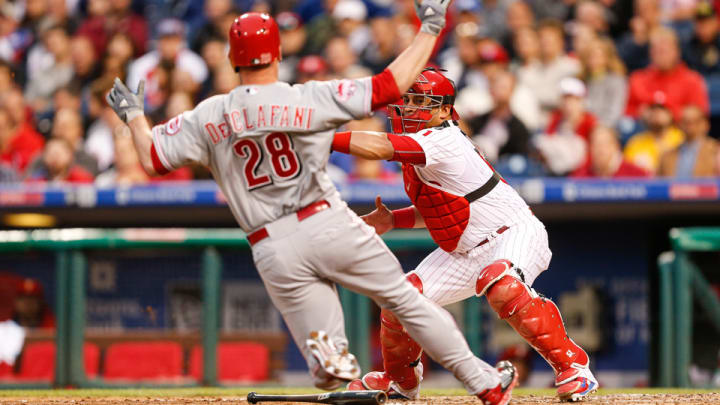
Rule 7.13, the rule prohibiting home plate collisions, reared its head again on Thursday night, turning what looked like a sure out at home into the go-ahead run for the Reds in a game they ultimately won, 6–4, over the Phillies at Citizens Bank Park. The play marked just the second time this season Rule 7.13 had been invoked to overturn an out call at home, and while a survey of previous plate-blocking challenges this season does provide some clarity as to how the rule is being interpreted, the overturned call on Thursday suggests that there’s still work to be done to get the rule to be applied correctly.
By cross-checking the replay data at BaseballSavant.com with videos of the corresponding plays on MLB.com, I have determined that there have been 11 replays invoking the question of plate blocking vis-à-vis Rule 7.13 this season. In every case, the call on the field was that the runner was out. In nine of those cases, the catcher was found not to be blocking the plate and the call was upheld. In two instances, including Thursday night’s, the call was overturned and the runner was called safe.
Lance McCullers gives dangerous Astros another young weapon
In the majority of those plays, the catcher set up to receive the throw with his left foot on the leftfield foul line and only moved toward foul territory after receiving the throw in an attempt to apply the tag, or in an attempt to field the throw. In every one of those cases, the out call at the plate was upheld. In the two cases in which the call was overturned and the runner was ruled safe, the catcher initially set up with his left foot well into foul territory.
For example, here is Francisco Cervelli setting up with his foot on the line in a manner approved by the replay umpires on April 20:
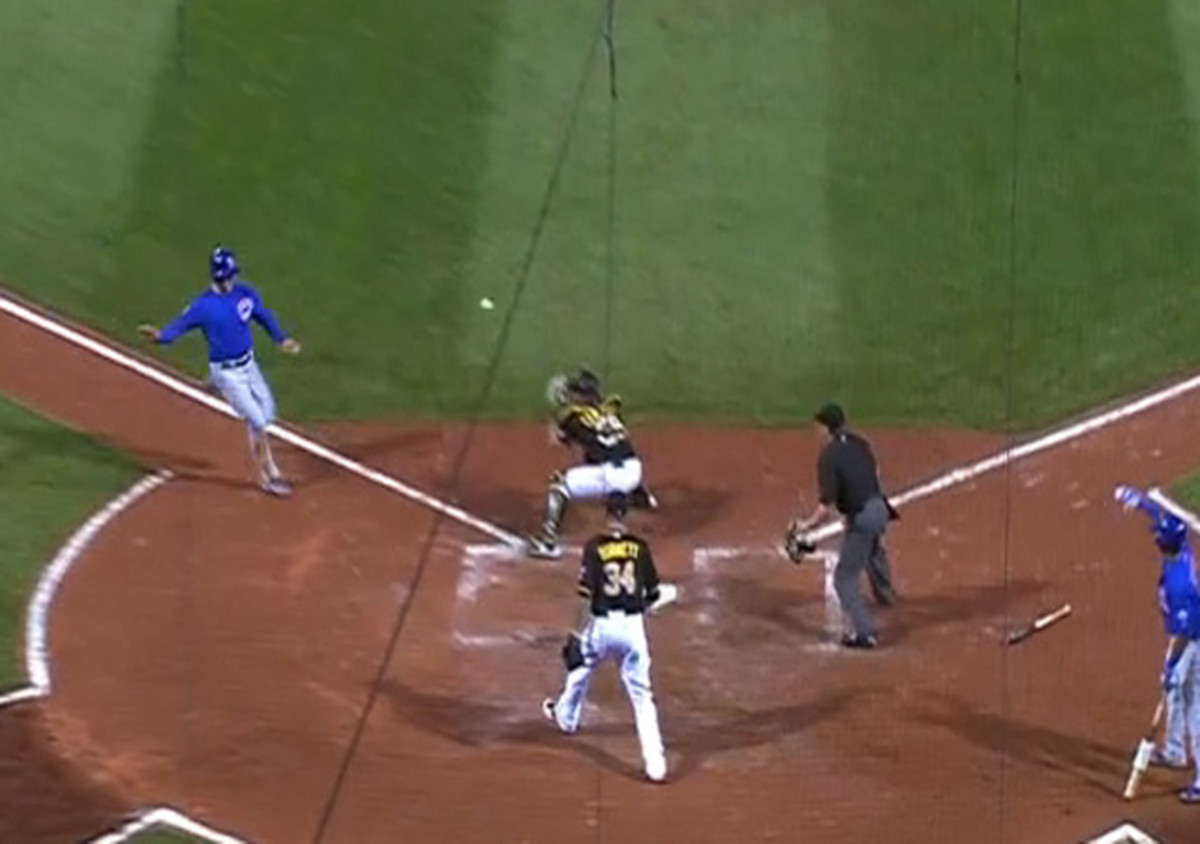
And here are where the two catchers ruled to have illegally blocked the plate were set up.
Anthony Reckeron April 23:
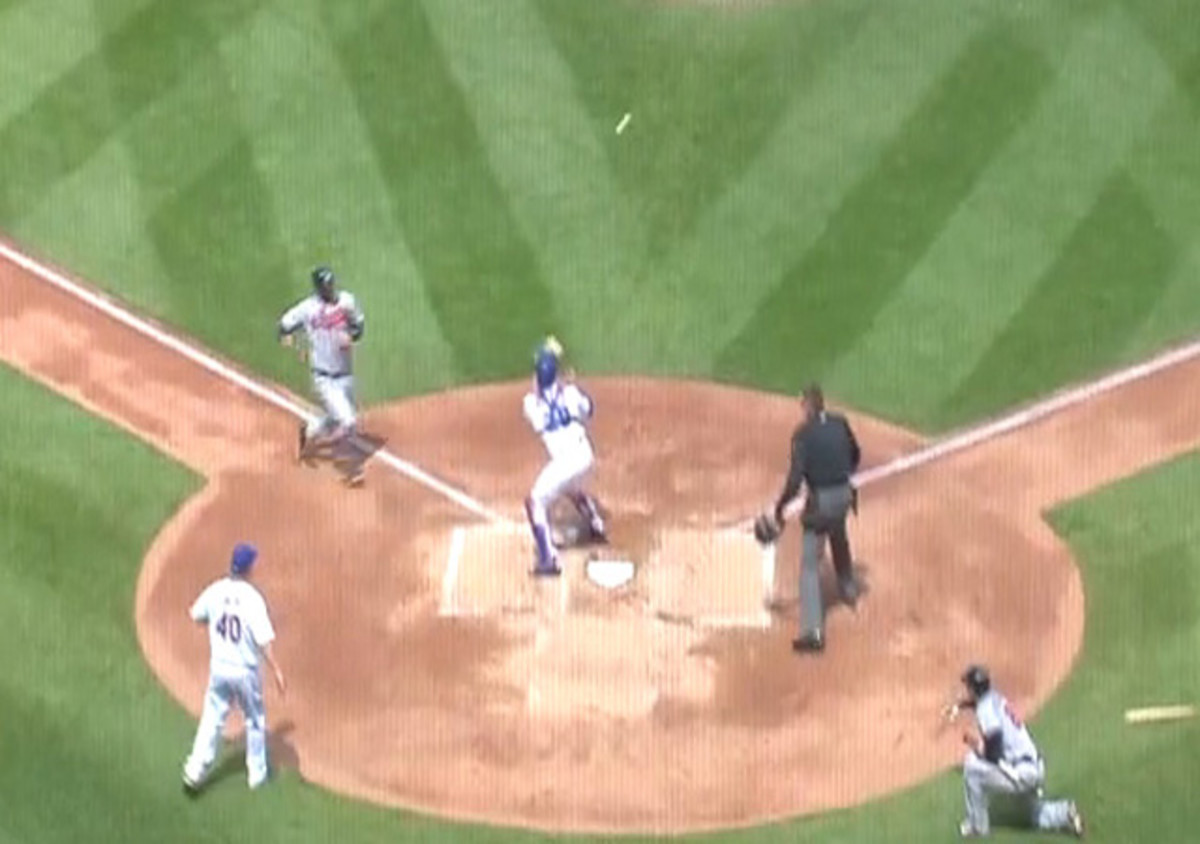
Carlos Ruizon Thursday night:
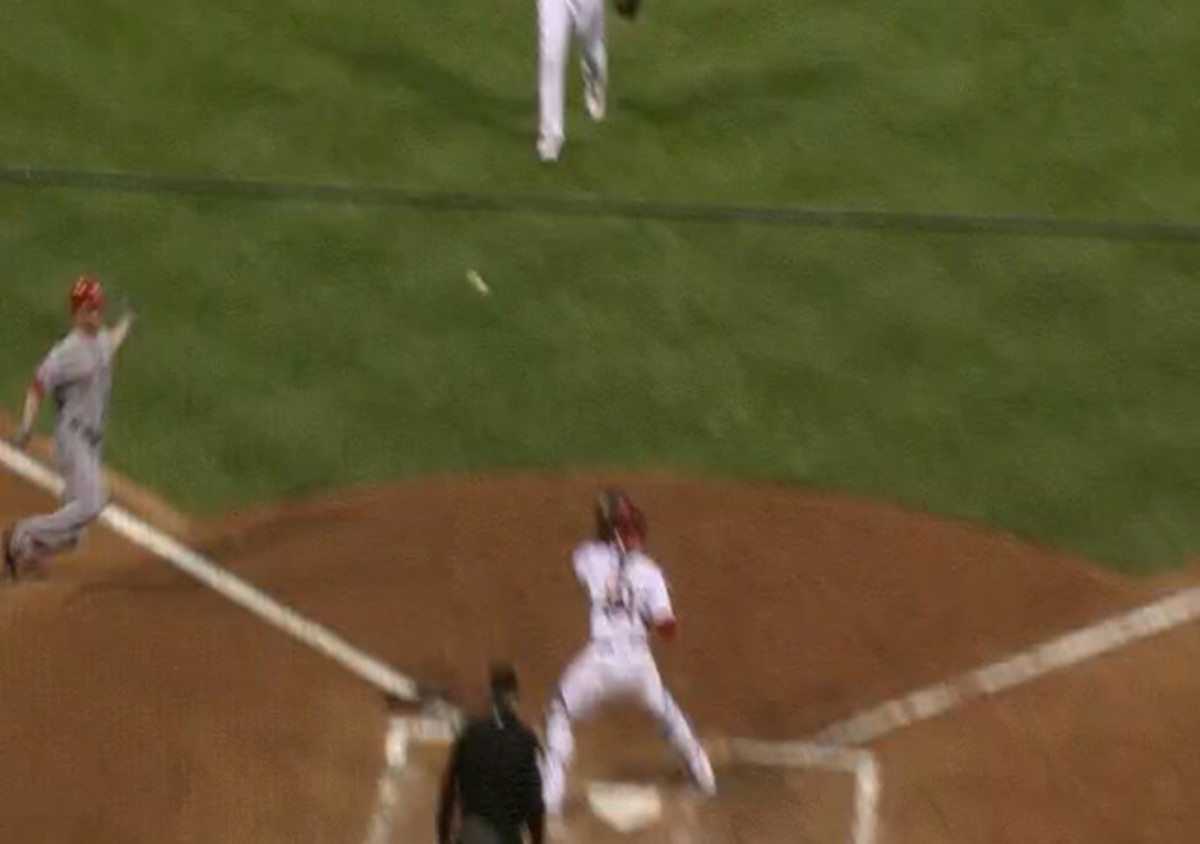
That seems pretty clear-cut: Ruiz and Recker each clearly had their left foot well into foul territory, whereas Cervelli did not.
Awards Watch: Donaldson, Trout neck and neck for lead in AL MVP race
It’s reassuring to find some level of consistency in the application of this rule. I still contend that, as written, the key to interpretation should not be where the catcher sets up but whether or not he has the ball before the runner arrives, but am pleased that there’s at least some identifiable standard being applied. That’s a significant improvement from last year, when no such standard was detectable. Still, I’m troubled by Thursday night’s ruling, as I believe that it led to the Reds scoring a run that should not have counted. Let’s take a look at two more images from Thursday night’s play.
Here’s the moment that Ruiz caught the ball:
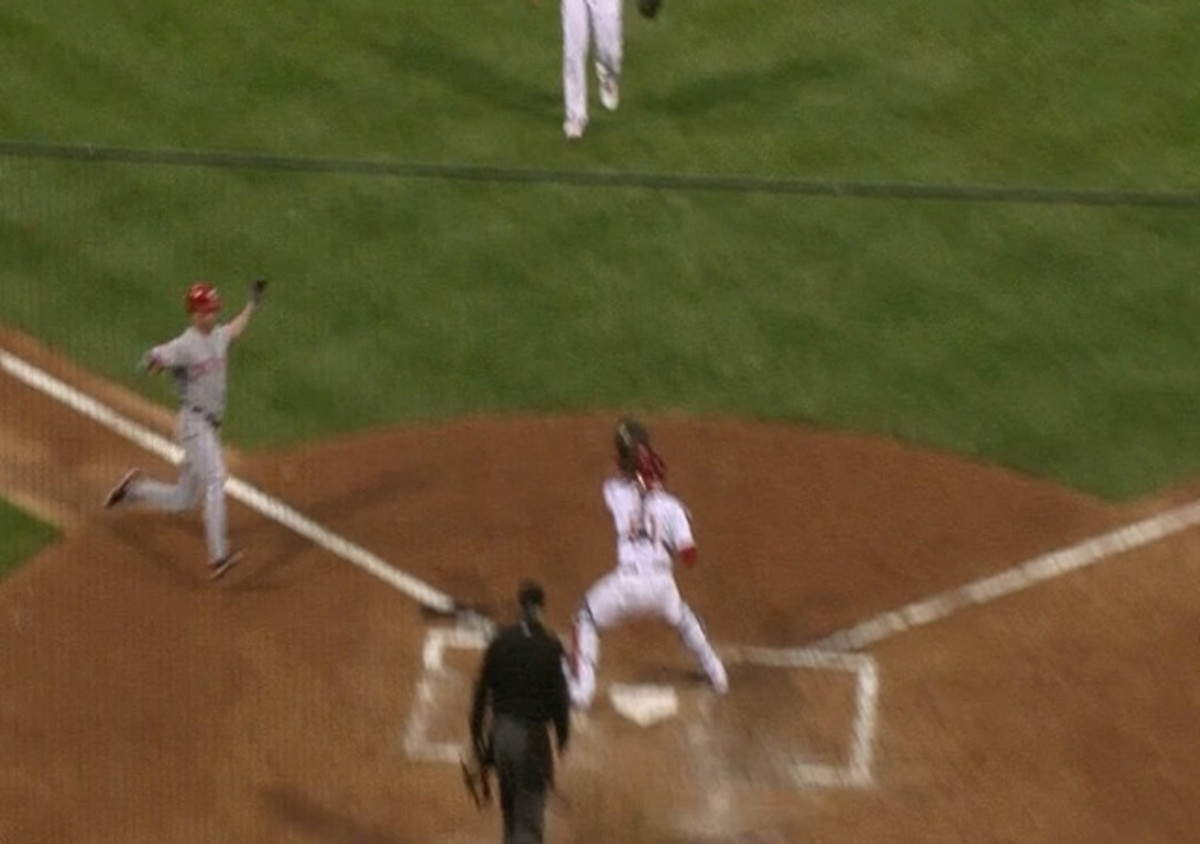
And here’s the moment after he applied the tag on Reds base runner Anthony DeSclafani:
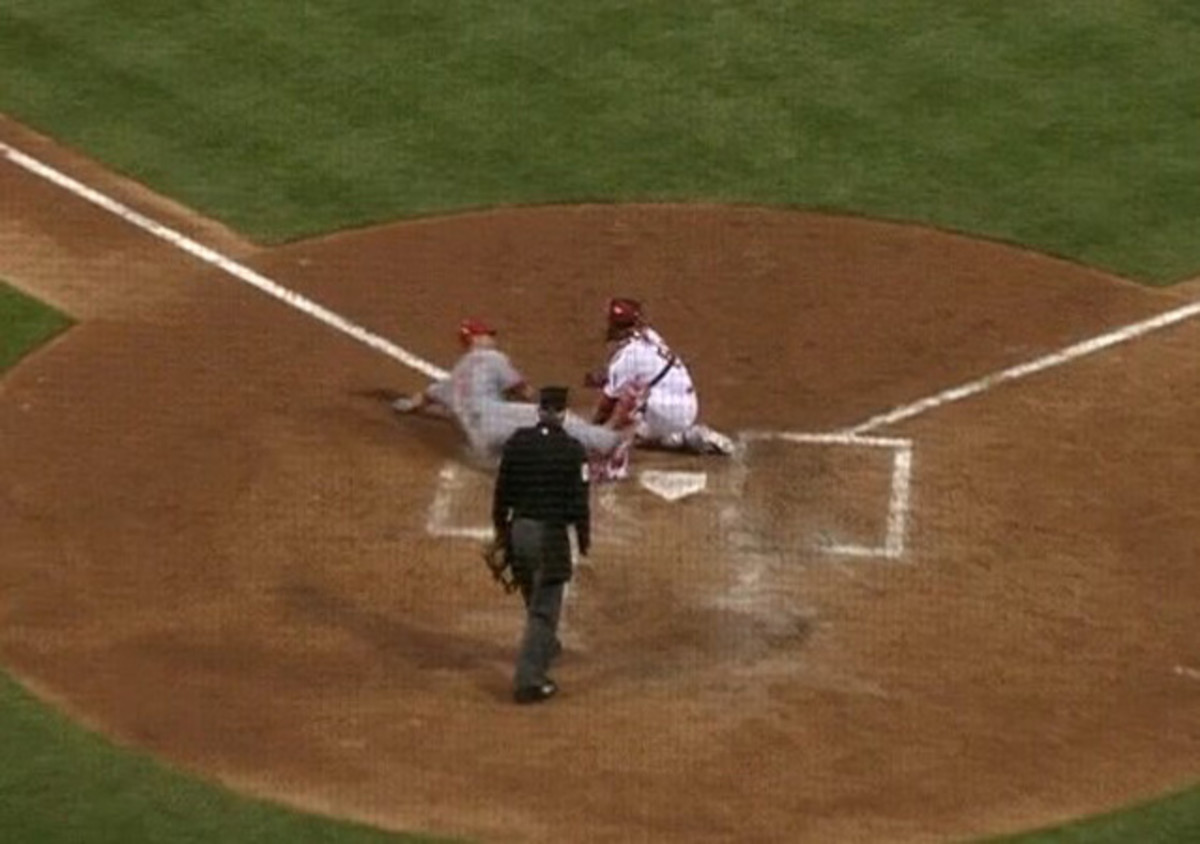
Now consider what MLB Executive Vice President Joe Torre wrote in his memo to teams clarifying this rule last September. As reported by ESPN’s Jayson Stark—who obtained a copy of the memo, which was not officially released to the public—Torre instructed the umpires “not to call a runner safe, even if the catcher has blocked the plate without the ball, if there is no evidence that the catcher has ‘hindered or impeded’ [Torre’s words] the runner’s path to home plate.” “If the runner would have been called out notwithstanding the catcher’s improper positioning in front of the plate,” Torre wrote, “the out call will stand.”
Lance McCullers's 10-strikeout, zero-walk game illustrates bigger trend
The image above freezes the action a moment after Ruiz applied the tag on DeSclafani to show that despite Ruiz’s positioning, DeSclafani was still able to get his right leg past the catcher in an attempt to reach home plate. Given how far DeSclafani was from home plate when Ruiz caught the ball, and how quickly and far in front of home plate Ruiz applied the tag, is there any evidence that Ruiz “hindered or impeded” DeScalfani’s path to home plate when he didn’t have the ball? Moreover, is there any reason to believe DeSclafani would have been called safe had Ruiz set up roughly a foot to his right in accordance with the standard being applied this season? I would argue that there was not. Given that, the out call at home should have been upheld on the simple common-sense notion that Ruiz’s positioning did not impact the play. DeSclafani was out by several feet.
Per Stark, “The wording was not intended to be interpreted so strictly that it would allow runners to be called safe on a technicality if the throw had beaten them to the plate by a substantial margin ... the memorandum specifically instructs umpires and replay officials not to find a ‘violation’ of the rule by the catcher ‘unless the catcher's position hindered or impeded the runner from scoring prior to the tag.’”
All of that points to the out call in Thursday night’s game being upheld. DeSclafani was out by a substantial margin and was not hindered or impeded prior to the tag, which occurred well in front of home plate.
The reversed call on Recker is a bit tricker, but I would argue that the out call should have been upheld in that case as well. Again, here’s the moment at which Recker caught the ball:
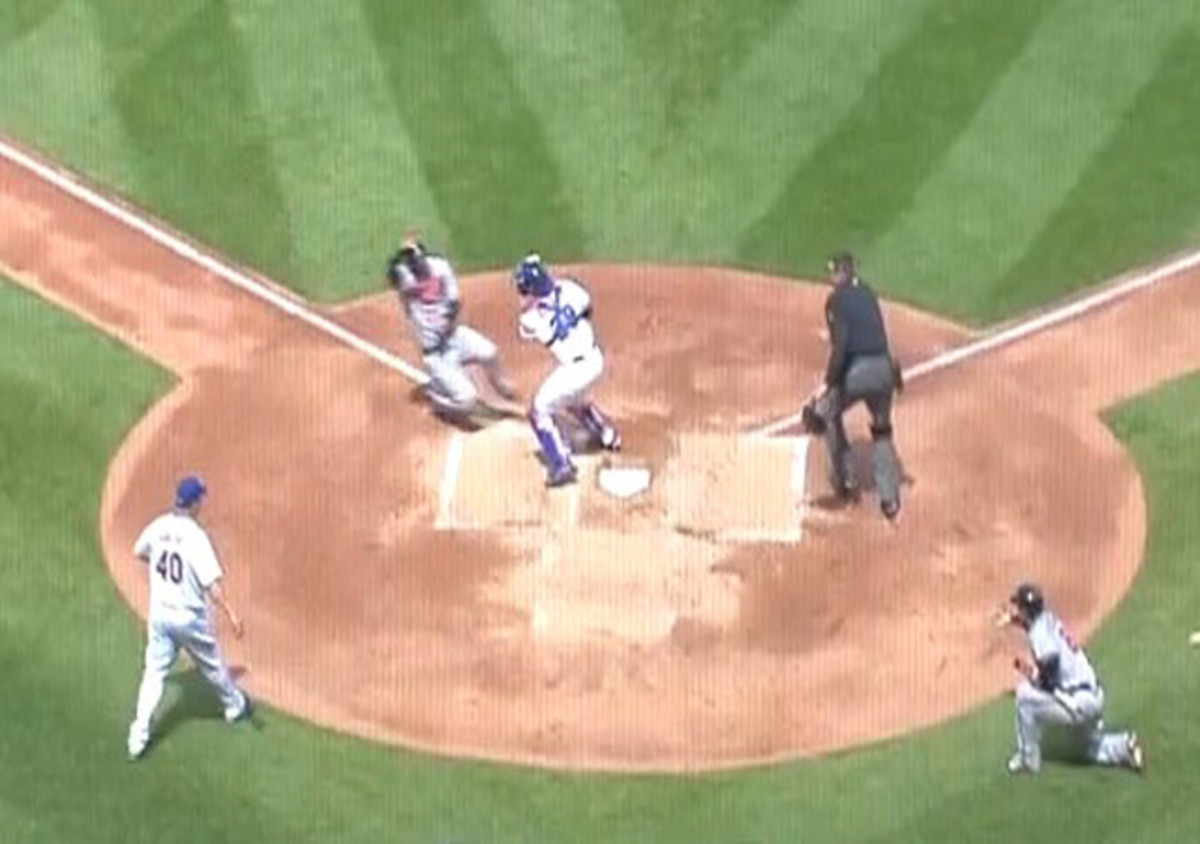
And here’s the tag:
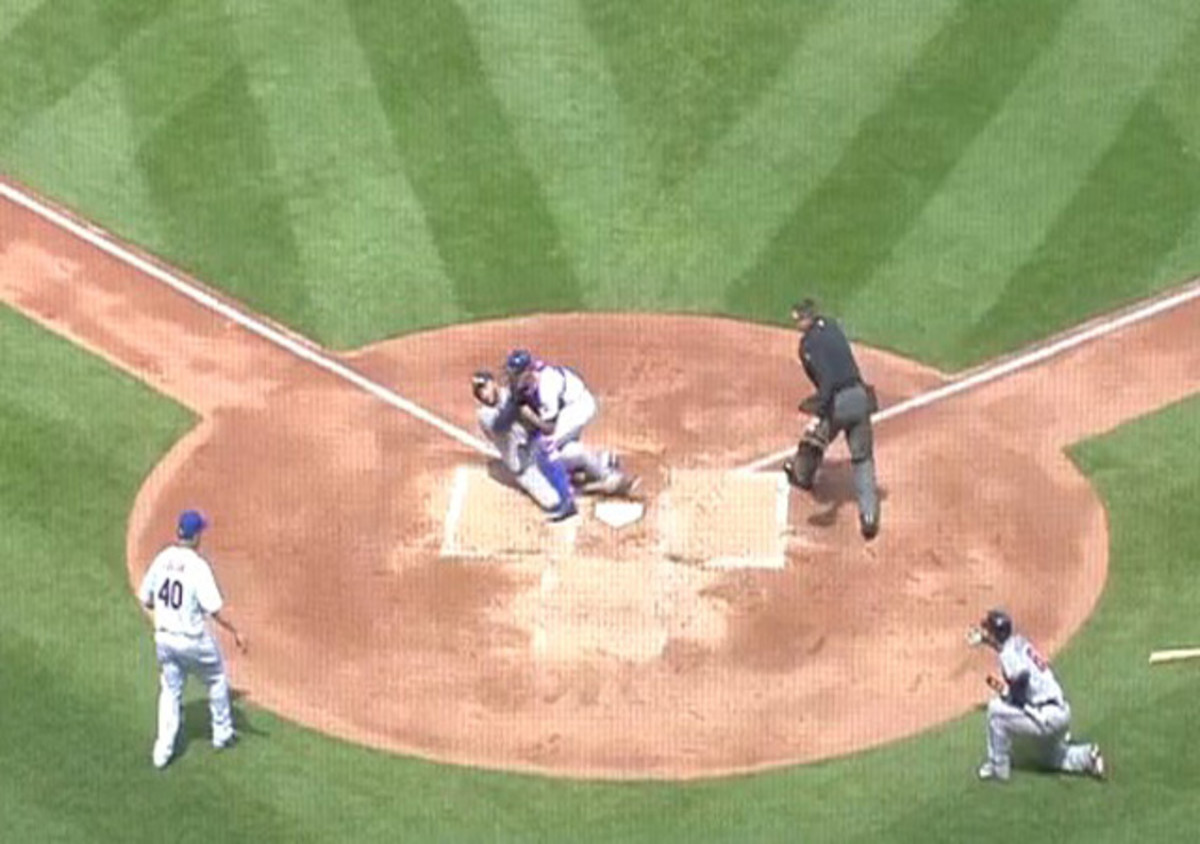
Replay showed that runner A.J. Pierzynski’s right foot did not touch home plate before the tag was applied, but he, like DeScalfani, was indeed able to reach the plate with his foot despite the catcher’s positioning. There was thus no evidence that Recker’s positioning hindered or impeded the runner’s path to the plate. Pierzynski slid hard into home through Recker’s legs but was tagged out before he could reach the plate, and Recker did indeed have the ball before the runner arrived and was in the process of making the tag when contact was initiated.
Kris Bryant or Carlos Correa: Which super prospect would you choose?
Compare that play to one that occurred between the Yankees and Rays on the very night that Torre issued his memo last year. In that play, which I break down here, Rays catcher Ryan Hanigan set up much like Recker did, with his left foot well inside the righthanded batter’s box. Hanigan caught the ball, much like Recker did, just as the runner was reaching the batter’s box and applied the tag in front of home plate as the runner arrived. In that case, with Torre’s memo fresh in their heads, the replay umpires upheld the out call on the field. The way I see it, that was the correct interpretation, whereas the Recker and Ruiz overturns above were not.
If it seems like this interpretation makes it particularly difficult for a catcher to be ruled in violation of Rule 7.13, you’re right, and I believe that’s how it should be. Indeed, that was the gist of Torre’s memo, that umpires shouldn’t be awarding runs on technicalities. It should take a flagrant violation of the rule to turn a clear out into a run, and such instances should, accordingly, be extremely rare.
To be fair, we’ve only had two out calls at home overturned due to Rule 7.13 through the first 807 games of the season, so such instances are already rare. But imagine for a moment that Thursday night’s play occurred not between DeSclafani and Ruiz, but between Alex Gordon and Buster Posey in the bottom of the ninth inning of Game 7 of last year’s World Series, when Gordon represented the game’s tying run with the Giants one out away from a title. Would you want a run that important to be awarded on a technicality when the runner was clearly beaten by both the throw and the tag? (Royals fans, don’t answer that.) That’s why it’s important to get the interpretation and application of this rule right. From what we’ve seen thus far this season, the umpires are getting closer, but they’re not there yet.
